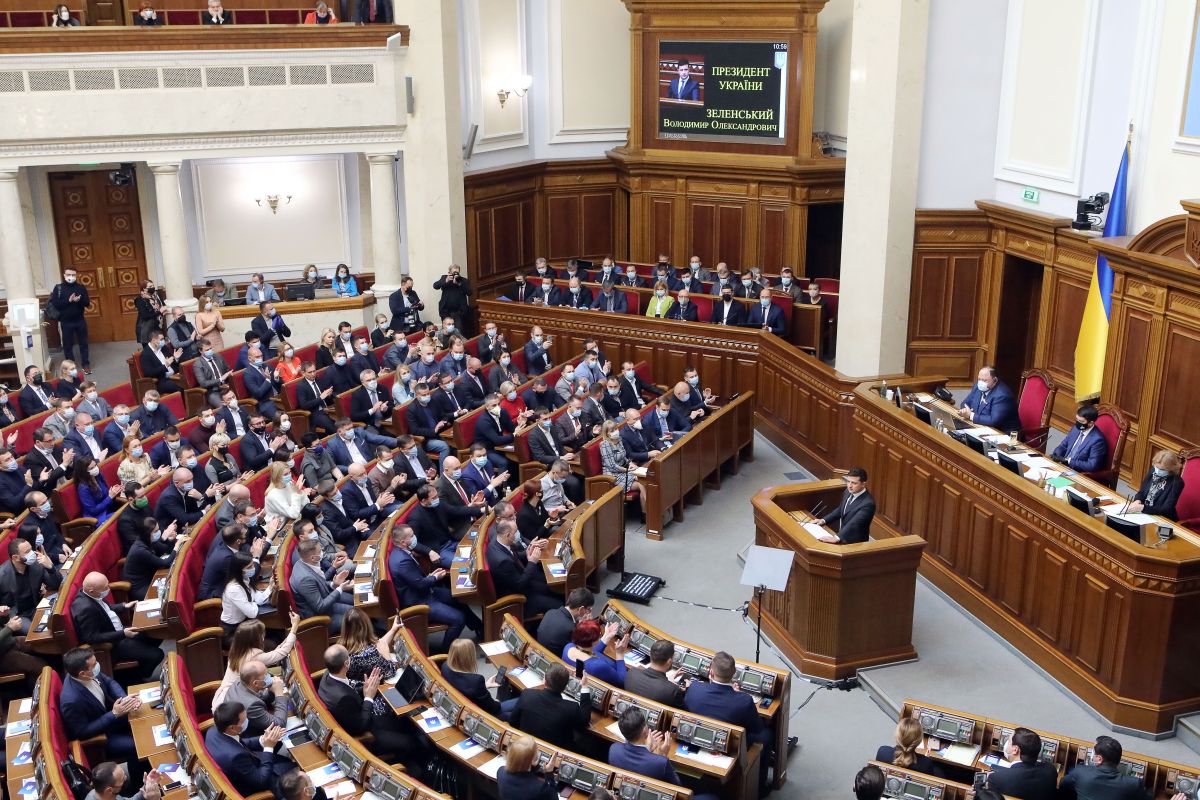The Art of the (Im)Possible: Ukraine's Strategy for the De-Occupation and Reintegration of Crimea
Approved by President Volodymyr Zelensky at the end of March, the “Strategy for the De-occupation and Reintegration of Crimea” is the single most important public document systematising Ukraine’s policy towards the peninsula since its annexation by Russia in 2014. Given the lack of prospects for regaining full control over Crimea in the short to medium term, the Ukrainian authorities will focus on maintaining world public opinion’s interest in the issue of the occupation of the peninsula. However, the lack of political will on the part of the Russian authorities to discuss the future of Crimea will make it impossible to establish a separate negotiation format devoted to its territorial restoration, as proposed in the strategy.
 .
.
General Principles of the Strategy
The strategy sets out the basic principles of Ukraine’s policy towards the occupied Crimea. According to its provisions, the Ukrainian authorities intend to counter Russian attempts to legitimise the annexation of the peninsula and prevent its further integration into Russia, as well as aim at increasing international pressure on Russia to cease its occupation of Ukrainian territory. In parallel, with the help of foreign audit firms, they will seek to create an evidence base of Russian actions in Crimea for future lawsuits and compensation. Identified as priority issues are the protection of the rights of Ukrainian citizens on the peninsula and providing them with social and humanitarian assistance and access to Ukrainian media, raising the costs of the Russian occupation of Crimea, and preventing environmental degradation. An analogous strategy was also developed under Petro Poroshenko’s presidency, yet due to its secret nature it is impossible to compare the two documents.
The strategy places particular emphasis on actions taken by the Ukrainian authorities in the international arena. On the one hand, they should lead to keeping the issue of the occupation of Crimea on the agenda of the most important international organisations, as well as expanding and tightening the sanctions imposed on Russia so as to prevent attempts to circumvent them. On the other hand, they should allow for minimising the negative impact that the Russian annexation and militarisation of Crimea has had on the security situation in the region and on the freedom of navigation in the Black and Azov seas, among others, by means of preventing private operators from third countries from supplying dual-use goods to the peninsula. Ukraine officially favours the denuclearisation and demilitarisation of Crimea, pointing out that it provides a bridgehead for the Russian military in the Mediterranean, Middle East and Africa, and that Russia’s deployment of a nuclear arsenal on Crimean territory would violate the international non-proliferation regime.
De-Occupation
Ukraine’s priority is to regain full control over the occupied peninsula through diplomatic means. To this end, the Ukrainian authorities intend to initiate international negotiations on Crimea, relying on the 1994 Budapest Memorandum, under which Ukraine handed over to Russia the nuclear arsenal it inherited from the USSR and joined the Nuclear Non-Proliferation Treaty. The potential participants of the new format of the talks should therefore be considered primarily the United States, the United Kingdom (as mediators) and Russia (the aggressor state), which, as signatories to the Memorandum, pledged to respect the territorial integrity of Ukraine and to support it if it fell victim to aggression. As a basis for the negotiations are to be used the results of the activity of the Crimean Platform, a new initiative of the Ukrainian authorities, the inaugural summit of which was scheduled for 23 August (Poland is among the countries that accepted an invitation to participate). Its aim will be to develop a framework for international policy towards Crimea, including non-recognition of its annexation and tightening of the sanctions regime.
The document does not indicate any specific mechanisms for Ukraine to regain control over the peninsula. At the same time, it assumes the return of Crimea to the de facto jurisdiction of Ukraine on the basis of the Ukrainian legal order, which means that, among others, the potential scenario of a future settlement of the status of the peninsula through a local referendum has been excluded. This is because, according to Ukraine’s constitution, issues of the country’s territorial changes can only be the subject of a nationwide referendum organised on the initiative of the parliament. Similarly ruled out is the scenario of a potential cession by the Ukrainian authorities of Crimea to Russia in exchange for compensation.
Reintegration
The strategy does not settle the future status of Crimea within Ukraine, therefore it is unclear whether, after the return of the peninsula to Ukrainian jurisdiction, the administrative independence of Sevastopol as a city with oblast rights would be maintained. The current Ukrainian authorities are in favour of abolishing the city’s special status. However, they believe that this should be done only after regaining control over Crimea, since the documents of international organisations directly point to the Russian occupation of two Ukrainian administrative units—the Autonomous Republic of Crimea and the City of Sevastopol. Equally unclear is the future of autonomy for Crimean Tatars on the peninsula, as the document ultimately failed to include provisions in this respect that representatives of the Tatar self-government had demanded be taken into account.
Meanwhile, the strategy assumes that local elections in Crimea can be held only after Ukraine regains full control over the peninsula and reintegrates it into the politico-legal, cultural, and informational spheres. The document does not indicate the method explicitly, but in practice this implies the introduction of a transitional period of several years during which Crimea would be placed under temporary administration until the effects of the Russian occupation have been negated. Particularly important then will be to organise the return of the Crimean Tatars to the peninsula while at the same time determining the status of the Russian immigrants who illegally settled in Crimea after its annexation. The details of the transitional period are yet to be regulated in a separate law. A draft of the relevant legislation was presented last December by the Ukrainian Ministry for the Reintegration of the Temporarily Occupied Territories, but it did not receive political support at the time from the administration of President Volodymyr Zelensky and will therefore be amended.
Conclusions and Prospects
The strategy constitutes part of a broader effort by the Ukrainian government to draw greater international attention to the issue of Crimea’s annexation and to raising the cost to Russia of occupying the peninsula. Contrary to the situation in the Donetsk and Luhansk regions, the status of Crimea has not been a subject of negotiations with Russia analogous to the Normandy Format and the Minsk Agreements. The international sanctions imposed on Russia for its annexation of the peninsula—mainly on individuals and trade restrictions—are less severe than the sectoral economic sanctions imposed in connection with Russian military activities in Donbas.
The establishment of a new negotiations format dedicated solely to the issue of settling Crimea’s territorial control is currently unlikely due to a lack of political will on the part of Russia. Initiating the Crimean Platform will not be enough to change the Russian stance in this respect, although it may facilitate the consolidation of the international community around the issue of the occupation of the peninsula, depending ultimately on how many and which countries eventually become its members. The Russian authorities have been putting pressure on potential participants to force them to ignore the Platform or at least downgrade their delegation to the inaugural summit.
References in the “Strategy” to the Budapest Memorandum and the denuclearisation of Crimea indicate that Ukraine will seek to place the issue of the occupied peninsula in the broader context of international talks on countering the proliferation of weapons of mass destruction and arms control. From the Ukrainian perspective, this should allow them to obtain greater political and military support from the U.S. and the UK, including the involvement of both countries in peace talks with Russia and new security guarantees from them. As a political argument, the Ukrainian authorities will probably try to use the results of a poll from last autumn in which 75% of respondents supported “Ukraine’s right to use the security guarantees contained in the Memorandum” (the survey, organised by the president, was not representative, though).

